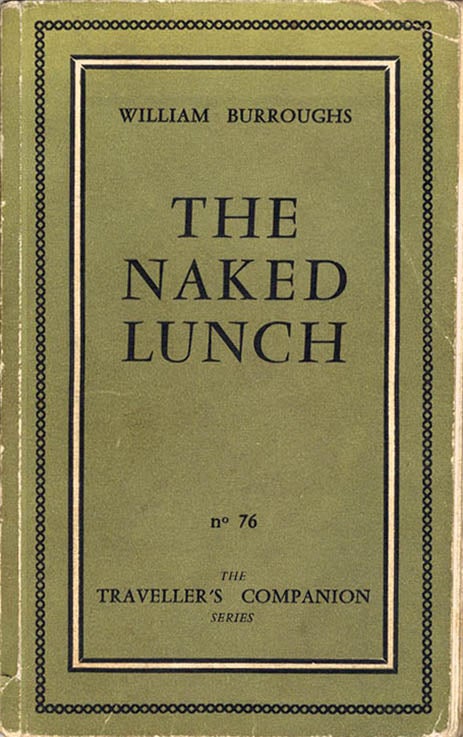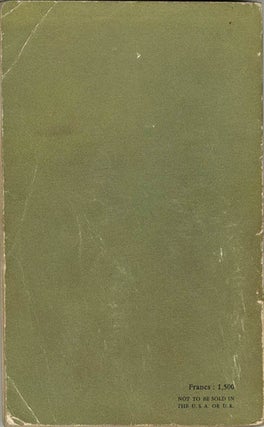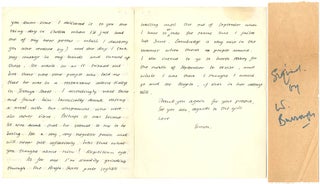13.
The Naked Lunch.
Paris: The Olympia Press, July 1959. First edition. 12mo. Wrps., 226pp. Issued as no. 76 in the Traveller’s Companion Series. Price on lower wrapper not cancelled (copies distributed following the revaluation of the Franc in January 1960 had the printed price stamped over).
Presentation copy, SIGNED and inscribed by the author on the title page: “For Douglas Line William Burroughs” [sic].
A fairly worn copy, but with an interesting provenance. Douglas Lyne and William Burroughs had a brief series of meetings during the early to mid-1960s, documented in two books, “Walking the London Scene: Five Walks in the footsteps of the Beat Generation” by Sydney Davies (Glasgow: The Grimsay Press, 2006), and “Hackney, That Rose-Red Empire: A Confidential Report” by Iain Sinclair (London: Hamish Hamilton, 2009).
In the former, Lyne, described by Davies as an “archivist and Chelsea habitué”, recounts how he purchased the book from a bouquiniste during a visit to Paris in early 1963 and that, after reading an article on Burroughs in the Evening Standard on his return to London, contacted Burroughs’s editor, Arthur Boyars, who gave him the phone number of the Empress Hotel in Earl’s Court, Burroughs’s London headquarters at the time. Lyne made the call and met Burroughs that night at the nearby Lillie Langtry pub, where this copy of “The Naked Lunch”, then still banned in England, was signed to him.
Subsequent meetings took place at Lyne’s local, the Surprise in Chelsea, recounted by him in the course of his interview with Iain Sinclair. During the first of these he loaned £1 to Burroughs, a sum returned to him at their following meeting about two years later, also at the Surprise pub (at the end of the evening they returned to Lyne’s flat on Tite Street where he tape recorded an interview with Burroughs for his archive).
In recalling the period to Sinclair, Lyne twice mentions the Seligman “banking family” (also connected to the Guggenheims), and included here is an autograph letter from his nephew, Simon Seligman, dated August 8, 1972, to Lyne’s wife, Monica, in which Seligman describes his recent encounter with Burroughs at Rowley’s Restaurant on Jermyn Street (around the corner from Duke Street, St. James’s): “I… found him laconically drunk eating a meal with two companions who were also rather silent… He’s a very, very negative person and will never talk reflectively. Was that what you thought about him? Reptilian eye” (in fact, Lyne told Sinclair that he thought Burroughs was a “Very engaging fellow, no doubt about it. Patrician, old style: Emerson. Monica adored him”).
The book itself is well-read and somewhat worn, with creasing to wrappers and slight soiling and staining to edges; the binding is intact, though the signatures are a little shaky and there is a short split to the tail of the spine. Ownership signature of Douglas Lyne in pencil to front free endpaper. Overall, a Fair to Good copy of Burroughs’s landmark work, with a documented provenance and a near-contemporary presentation inscription seldom found with this title.
Accompanied by Lyne’s original clipping from the London Evening Standard, featuring Anne Sharpley’s “Rare Interview [with] El Hombre Invisible” (March 7, 1963), the article in which he first “discovered that Burroughs was the talk of the town."
 Back to top
Back to top









